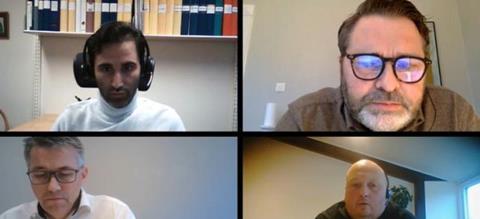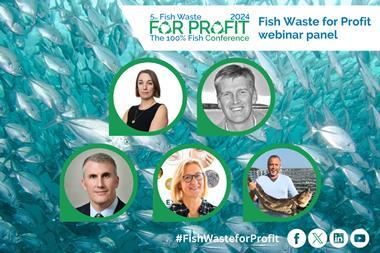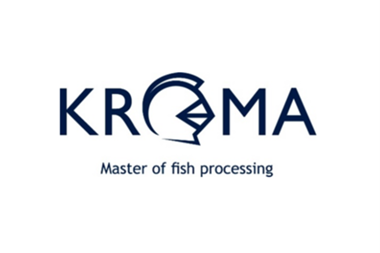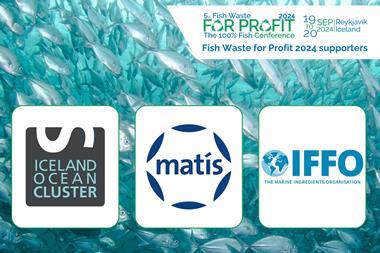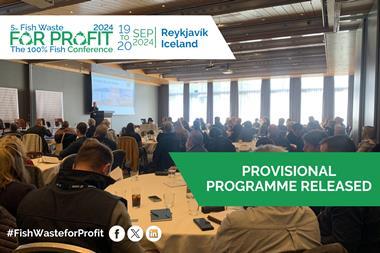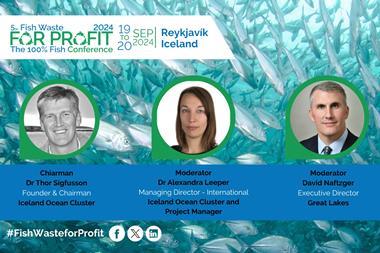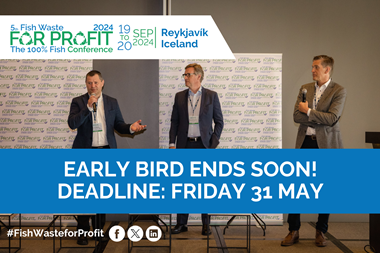There’s no doubt there’s value to be extracted from elements of seafood production that are currently under-utilised, or even not used at all – and the key message from the first Fish Waste for Profit session held as part of IceFish Connect, is that the whole chain needs to be involved for this to happen.
Vilhjálmur Jens Árnason of the Iceland Ocean Cluster chaired Frode Blålid of Nuas Technology, Baader’s Dennis Lohmann and researcher Mehdi Abdollahi at the Chalmers University of Technology in Sweden as they expanded on the work they are doing in this field.
Nuas Technology has developed a hydrolysis process to convert raw material and biomass into high-quality oil, bone and protein. This two-tonne capacity pilot project, housed in a stack of shipping containers, is now ready after an extensive testing phase to be incorporated as a next step into a processing plant.
It’s flexible, processing salmon, cod and herring, as the team has worked with different enzymes to identify the best possibilities. As an example, spring and autumn herring require different treatments to get the best results.
Frode Blålid stressed that freshness is vital, and the Nuas system is suited to being part of an on-board processing setup. With no acids used as additives, the best results are obtained with material that is either fresh or which has been quick-frozen in the proper manner.
He commented that with pet food, feed, and even pharma sectors as outlets for production, there are possibilities for co-products that have higher values than main products.
Baader’s Head of Technology Management Dennis Lohmann described the approach to aspects of salmon production, in which 12% of production becomes frames and trimmings, and of this 15% is high quality meat lost to the main product during processing.
Baader and GEA Westfalia Separator came up with a way to process this production waste to extract de-oiled meat and cold pressed salmon oil, both of which are products with significant values.
He commented that in this development the innovation lies not in developing new technology, but in bringing together elements of known technologies.
“This uses well-known technologies that we correctly lined up. There was no need to add anything to be able to produce these high-value products,” he said, adding that this includes three process steps that have been shown to be effective, and from there this can be upscaled to an industrial level.
“Baader and GEA are part of this development to reach 100% utilisation,” he said.
Chalmers University of technology researcher Mehdi Abdollahi has been working on Ph adjustment as one of the ways to deal with the estimated 50-70% of biomass that remains to be fully utilised.
“There is a range of food products that can be put back into food production, and all of this is done at low temperature. There’s no need for drying processes, which requires high energy levels,” he said.
“The technology is very promising, as the value chain needs to be optimised.”
Speakers during the session were in agreement that to achieve 100% utilisation, the whole production and value chain needs to be engaged.
“There’s no one company that can do it on their own to make this happen,” Dennis Lohmann said.
“It needs suppliers – companies like us – product developers and end users to all be involved for this to work.”
“It’s all about margins,” Frode Blålid said, commenting on how to encourage operators to land correctly handled raw materials. “The solution is in better markets.”
Taking place between 16-18 November 2021, Icefish Connect is a brand new virtual commercial fishing exhibition with rich and engaging content that enables visitors and exhibitors to meet and develop business.
